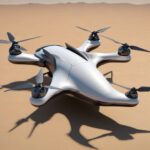Wearable technology has emerged as a transformative force in the realm of sports, revolutionizing how athletes train, compete, and recover. This innovative technology encompasses a wide array of devices, including smartwatches, fitness trackers, heart rate monitors, and specialized sensors embedded in clothing or equipment. The primary allure of wearable technology lies in its ability to provide real-time data and insights that can enhance athletic performance and overall health.
As athletes strive for excellence, the integration of these devices into their routines has become increasingly prevalent, offering a competitive edge that was previously unattainable. The evolution of wearable technology in sports can be traced back to the early days of simple pedometers and heart rate monitors. However, advancements in sensor technology, data analytics, and connectivity have propelled the development of sophisticated devices capable of capturing a multitude of metrics.
These innovations have not only made it easier for athletes to monitor their performance but have also democratized access to high-level training insights. As a result, both amateur and professional athletes are now leveraging these tools to optimize their training regimens and achieve their goals.
Key Takeaways
- Wearable technology in sports has revolutionized the way athletes monitor and track their performance.
- It has enhanced training and recovery by providing real-time feedback and analysis.
- Wearable technology has also improved injury prevention by monitoring and analyzing movement patterns.
- Integration with sports equipment has allowed for personalized coaching and training programs.
- Future developments in wearable technology for athletes will continue to push the boundaries of performance monitoring and analysis.
Monitoring and Tracking Performance
One of the most significant advantages of wearable technology is its ability to monitor and track an athlete’s performance with remarkable precision. Devices such as GPS-enabled watches and fitness trackers can record metrics like distance covered, speed, elevation gain, and even cadence during activities such as running or cycling. This data allows athletes to analyze their performance over time, identify trends, and make informed decisions about their training strategies.
For instance, a long-distance runner can use this information to determine their optimal pacing strategy for races or to assess the effectiveness of their training plan. Moreover, wearable technology can provide insights into physiological metrics that are crucial for performance optimization. Heart rate monitors, for example, enable athletes to gauge their exertion levels during workouts and ensure they are training within their target heart rate zones.
This information is vital for maximizing cardiovascular fitness and endurance. Additionally, advanced wearables can track metrics such as VO2 max, lactate threshold, and recovery heart rate, offering a comprehensive view of an athlete’s fitness level. By continuously monitoring these parameters, athletes can adjust their training intensity and volume to avoid overtraining and enhance performance.
Enhancing Training and Recovery

Wearable technology plays a pivotal role in enhancing both training effectiveness and recovery processes for athletes. By providing real-time feedback on performance metrics, these devices enable athletes to fine-tune their workouts for maximum efficiency. For example, a cyclist can use a power meter integrated into their bike to monitor their wattage output during rides.
This data allows them to adjust their effort levels in real-time, ensuring they are training at the appropriate intensity to build strength and endurance. In addition to optimizing training sessions, wearables also facilitate better recovery strategies. Devices equipped with sleep tracking capabilities can monitor an athlete’s sleep patterns and quality, providing insights into how well they are recovering from intense training sessions.
Understanding sleep quality is crucial for athletes since inadequate rest can lead to decreased performance and increased risk of injury. By analyzing sleep data alongside training loads, athletes can make informed decisions about when to push harder or when to prioritize rest and recovery.
Improving Injury Prevention
Injury prevention is a critical concern for athletes at all levels, and wearable technology has emerged as a valuable tool in mitigating this risk. Many wearables are designed to monitor biomechanical data that can indicate potential injury risks. For instance, motion sensors embedded in clothing or footwear can analyze an athlete’s movement patterns during training or competition.
By identifying irregularities in gait or technique, these devices can alert athletes and coaches to potential issues before they result in injury. Furthermore, wearables can track workload metrics, such as training volume and intensity, which are essential for preventing overuse injuries. Athletes often struggle with balancing training loads; too much intensity without adequate recovery can lead to stress fractures or tendonitis.
By monitoring these metrics closely, teams can implement preventive measures that keep athletes healthy and on the field.
Real-time Feedback and Analysis
The capacity for real-time feedback is one of the most compelling features of wearable technology in sports. Athletes can receive immediate insights into their performance during training sessions or competitions, allowing them to make instant adjustments. For example, a swimmer wearing a smart swim cap equipped with sensors can receive feedback on stroke efficiency and lap times while still in the pool.
This immediate data empowers athletes to refine their techniques on the spot rather than waiting until after the session to analyze performance. Moreover, real-time analysis extends beyond individual performance; it also enhances team dynamics in sports like basketball or soccer. Coaches can utilize wearable technology to monitor players’ movements on the field or court during games.
By analyzing data such as player positioning, distance covered, and sprinting efforts in real-time, coaches can make tactical adjustments mid-game based on player performance metrics. This level of insight allows teams to adapt strategies dynamically, ultimately improving overall game performance.
Integration with Sports Equipment

Enhancing Performance with Smart Equipment
Many modern sports gear manufacturers are incorporating sensors directly into equipment such as shoes, helmets, and even balls. For instance, smart basketballs equipped with sensors can track shooting accuracy and ball handling skills during practice sessions. This data provides players with valuable insights into their shooting mechanics and areas for improvement.
Enhancing Safety without Compromising Performance
Additionally, wearable technology is being integrated into protective gear to enhance safety without compromising performance. In contact sports like football or hockey, helmets equipped with impact sensors can monitor the forces experienced during collisions.
Informing Decisions on Player Safety
This information is crucial for assessing the risk of concussions or other injuries. Coaches and medical staff can use this data to make informed decisions about player safety and readiness to return to play after an injury.
Personalized Coaching and Training Programs
Wearable technology has paved the way for personalized coaching experiences that cater to the unique needs of each athlete. With access to detailed performance data collected from wearables, coaches can develop tailored training programs that align with an athlete’s specific goals and physical capabilities. For example, a runner aiming to improve their marathon time may receive a customized training plan based on their heart rate variability, pace data, and recovery metrics gathered from their wearable device.
Furthermore, advancements in artificial intelligence (AI) are enhancing the personalization aspect of coaching through wearables. AI algorithms can analyze vast amounts of data from multiple athletes to identify patterns and trends that inform individualized training regimens. This level of customization ensures that athletes receive guidance that is not only based on general principles but also on their unique physiological responses and performance history.
Future Developments in Wearable Technology for Athletes
The future of wearable technology in sports holds immense potential for further innovation and enhancement of athletic performance.
For instance, future wearables may incorporate advanced biometric sensors that monitor hydration levels or blood glucose levels in real-time, providing athletes with critical information about their physiological state during training or competition.
Moreover, the integration of augmented reality (AR) into wearable technology could revolutionize how athletes train and compete. Imagine a scenario where a runner wears AR glasses that overlay real-time performance data onto their field of vision while they run outdoors. This immersive experience could provide instant feedback on pace, distance remaining, or even visual cues for improving form without distracting from the activity itself.
As wearable technology continues to evolve, its impact on sports will likely expand beyond individual athletes to encompass entire teams and organizations. Data analytics platforms that aggregate information from multiple wearables could provide coaches with comprehensive insights into team dynamics, player health trends, and overall performance metrics. This holistic approach could lead to more informed decision-making at all levels of competition.
In conclusion, wearable technology is reshaping the landscape of sports by providing athletes with unprecedented access to performance data and insights. From monitoring performance metrics to enhancing training regimens and preventing injuries, these devices are becoming indispensable tools for athletes striving for excellence in their respective fields. As technology continues to advance, the future promises even greater innovations that will further elevate athletic performance and redefine what is possible in sports.
For those interested in the intersection of technology and fashion, particularly in how it can enhance performance and functionality, a related article worth reading discusses the incorporation of generative AI into the fashion industry. This innovative approach not only revolutionizes design processes but also opens up new possibilities for creating high-performance athletic wear. To explore more about how AI is shaping the future of fashion and potentially influencing athletic apparel, check out the full article here.












